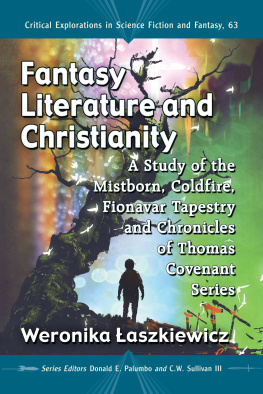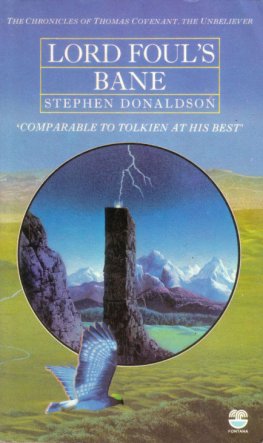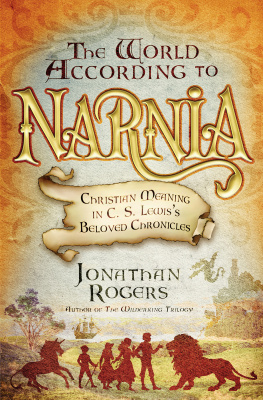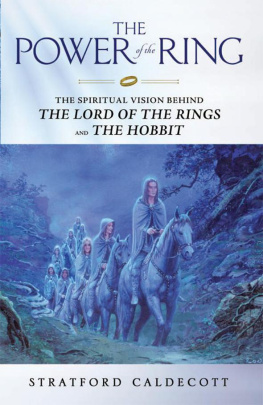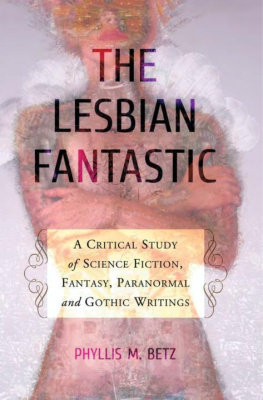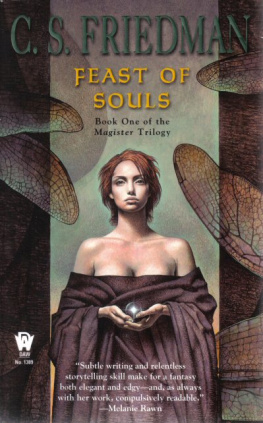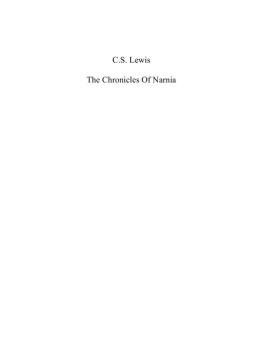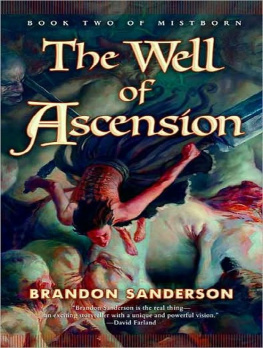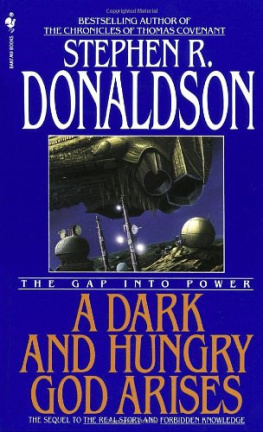
Fantasy Literature and Christianity
A Study of the Mistborn, Coldfire, Fionavar Tapestry and Chronicles of Thomas Covenant Series
WERONIKA ASZKIEWICZ
CRITICAL EXPLORATIONS IN SCIENCE FICTION AND FANTASY, 63
Series Editors Donald E. Palumbo and C.W. Sullivan III

McFarland & Company, Inc., Publishers
Jefferson, North Carolina
LIBRARY OF CONGRESS CATALOGUING DATA ARE AVAILABLE
BRITISH LIBRARY CATALOGUING DATA ARE AVAILABLE
e-ISBN: 978-1-4766-3483-8
2018 Weronika aszkiewicz. All rights reserved
No part of this book may be reproduced or transmitted in any form or by any means, electronic or mechanical, including photocopying or recording, or by any information storage and retrieval system, without permission in writing from the publisher.
Front cover image 2018 iStock
McFarland & Company, Inc., Publishers
Box 611, Jefferson, North Carolina 28640
www.mcfarlandpub.com
To my grandmother, Mieczysawa,
and
to my husband, Mariusz
for their endless support
Acknowledgments
The following work is based on my Ph.D. dissertation, which was written under the supervision of Professor Zbigniew Maszewski and defended at the University of Biaystok (Poland) in 2016. I would like to sincerely thank Professor Maszewski for his continuous support, patience, and invaluable advice. I would also like to thank Professor Andrzej Wicher and Professor Pawe Frelik, whose reviews of my dissertation allowed me to further improve my work. Thanks, as well, to the two anonymous readers who provided feedback on the first book draft. Last, but not least, I would like to thank my institution, the University of Biaystok, for the funds thanks to which I was able to continue my research and complete this book.
It should be noted that some of the ideas developed in this book were first approached and tested in the following of my articles: Finding God(s) in Fantasylands: Religious Ideas in Fantasy Literature (Crossroads. A Journal of English Studies, 1/2013), Phenomenology of Religion and the Study of Modern Fantasy Literature (Acta Neophilologica, XVI (1), 2014), Reinterpretacja chrzecijaskiego motywu ofiary i odrodzenia w cyklu Fionavarski Gobelin Guya Gavriela Kaya i Trylogii Zimnego Ognia Celii S. Friedman (Motywy religijne we wspczesnej fantastyce [The Reinterpretation of the Christian Motif of Sacrifice and Rebirth in Guy Gavriel Kays Fionavar Tapestry and Celia S. Friedmans Coldfire Trilogy. In Religious Motifs in Contemporary Fantastic Literature], eds. Mariusz M. Le and Piotr Stasiewicz, Biaystok: Wydawnictwo Uniwersytetu w Biaymstoku, 2014), and Benevolent and Malevolent Creatures in Guy Gavriel Kays Fionavar Tapestry (Imaginary Creatures in Medieval and Modern Fantasy Literature, ed. ukasz Neubauer, Krakw: Libron, 2016).
Preface
The aim of this work is to investigate the representations of Christianity in American and Canadian fantasy novels and, in that way, contribute to the ongoing debate on the multifaceted relationship between Christianity and the fantasy genre. Since the majority of the available publications on fantasy and Christianity deal with the works of J.K. Rowling, J.R.R. Tolkien, C.S. Lewis, and Philip Pullman, to acknowledge other voices this volume analyzes a selection of works by North American fantasists: Stephen R. Donaldsons Chronicles of Thomas Covenant, Guy Gavriel Kays Fionavar Tapestry, Celia S. Friedmans Coldfire Trilogy, and Brandon Sandersons Mistborn series. The secondary religions appearing in these series are examined with the use of theories and methods offered by the phenomenology of religiona discipline which is concerned with the study of existing religions, yet its approach can be modified to serve as a tool of literary criticism. A phenomenological approach facilitates a thorough investigation of fictional religions, which can be then followed by objective evaluation of the extent to which these fictional religions rework or are informed by biblical tradition, Christian theology, and Christian morality (or any other religious tradition).
This work is divided into five chapters. Chapter 1 discusses some theoretical aspects of fantasy literature, introduces the methodology of the study, and investigates a selection of critical works which have examined both the Christian aspects of contemporary fantasy fiction and the presence of the fantastic within the Bible. Chapters from 2 to 5 explore fantastic gods and religions appearing in the selected series, and evaluate their correlations with Christianity. The conclusion summarizes the ways in which the chosen novels address the topics of Christianity and religion, and offers some final remarks on the complex relationship between the fantasy genre and Christianity.
Introduction
In a way, everything started because of J.K. Rowlings Harry Potter series. Before Rowlings young wizard became an internationally recognized persona and children of all ages turned into voracious readers who impatiently awaited another installment of his adventures, the religious dimensions of modern fantasy literature had not been much of an issue. Of course, the topic was raised by academia, and occasionally a scholarly publication dealing with some religious or spiritual aspects of a given series would appear. But it was only after the commercial success of Harry Potter that readers and viewers of various backgrounds started to question the religious aspects of fantasy literature. The controversy surrounding Harry Potter soon evolved into an international debate which encompassed other prominent titles: C.S. Lewiss The Chronicles of Narnia, J.R.R. Tolkiens The Lord of the Rings, and Philip Pullmans His Dark Materials. Today, readers can choose from a variety of scholarly and popular publications dealing with the religious dimensions of the aforesaid titles. This does not mean, however, that the topic has been sufficiently researched.
First of all, the majority of the available publications deal with the works of Rowling, Tolkien, Lewis, and Pullman, who are either regarded as masters of the genre or whose popularity has been greatly enhanced by the success of the movies based on their works. Because other fantasists have received markedly less scholarly attention, there are still several aspects of the relationship between fantasy literature and religion that require investigation. Secondly, some of the available publications (particularly the non-academic ones) seem strongly affected by the authors personal beliefs and feelings. Consequently, they run the risk of becoming either a devotional reading or a harsh critique of a chosen series. While in the case of the former, fragments of a fantasy novel might be exaggeratedly interpreted so that they will fit the proposed analysis (e.g., the stages of a heros adventures are read in the context of someapparently similarepisodes from the Bible), in the case of the latter, authors might become too serious in their condemnation of what is essentially a work of imagination (and argue, for instance, that fantasy literature is altogether inappropriate for Christian readers because of its portrayals of magic). Thirdly, some publications start with an unshaken conviction that a given fantasy novel is or is not entirely grounded in a particular religion (e.g., Christianity), and what follows is an analysis which almost unanimously supports the authors claim. As a result, such works do not explore in detail the imaginary gods and religions that appear in the chosen narrative or explore them without consistent methodology (especially in the case of non-academic publications).
Next page
